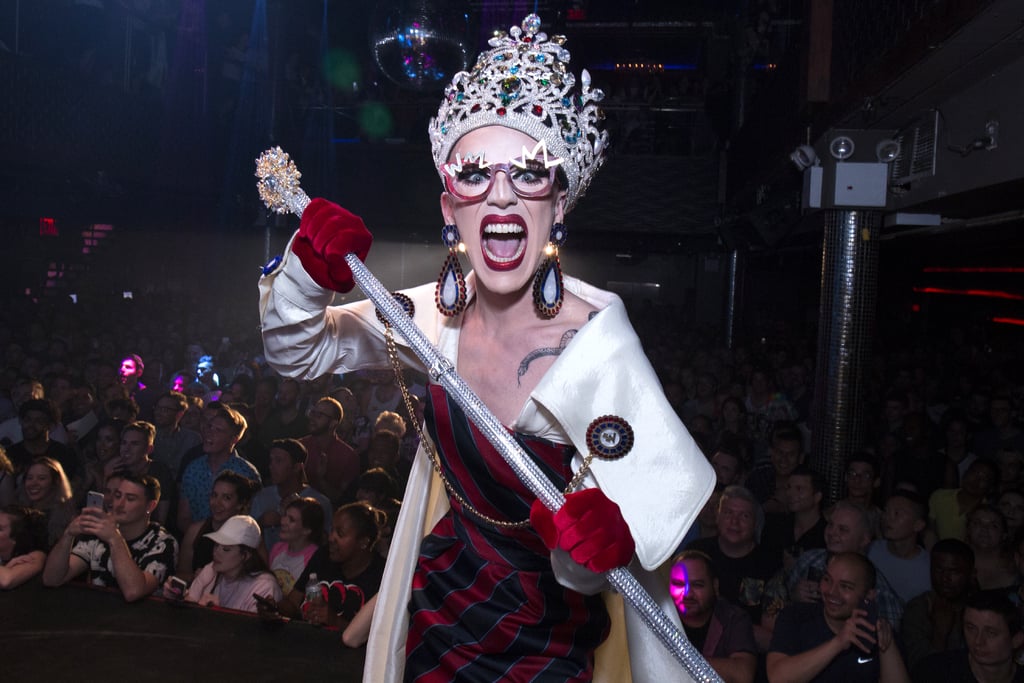
Sasha Velour RuPaul's Drag Race Interview June 2018
Sasha Velour Is Surrendering Her Crown, but She'll Always Be a F*cking Queen
With the end of RuPaul's Drag Race's landmark 10th season, Sasha Velour's reign as America's Next Drag Superstar is almost over. When she passes the coveted crown down to her successor, you may be tempted to think that the Velour era of drag is coming to an end. That her queendom is shrinking, or perhaps vanishing like some kind of ephemeral glimmer in an enchanted meadow. The real truth, as far as I can see, is that Velour is merely on the cusp of ascendancy. In fact, once she finds herself relieved of the parameters of being a "RuGirl" — this is a term used frequently among RPDR fans and insiders to refer to the show's alumni — she's poised to conquer much more than the reality competition series. She may just change the landscape of drag as we know it.
To be clear, Velour wouldn't necessarily condone any shade on RPDR, and shade is not what I'm attempting to throw. Being a RuGirl is a wonderful, incredible opportunity. "It's such an honor to get cast on that show, no matter how far you make it," Velour tells me on the phone in mid-June. "To have people say, 'Hey, we believe in you enough to put you on television.'"
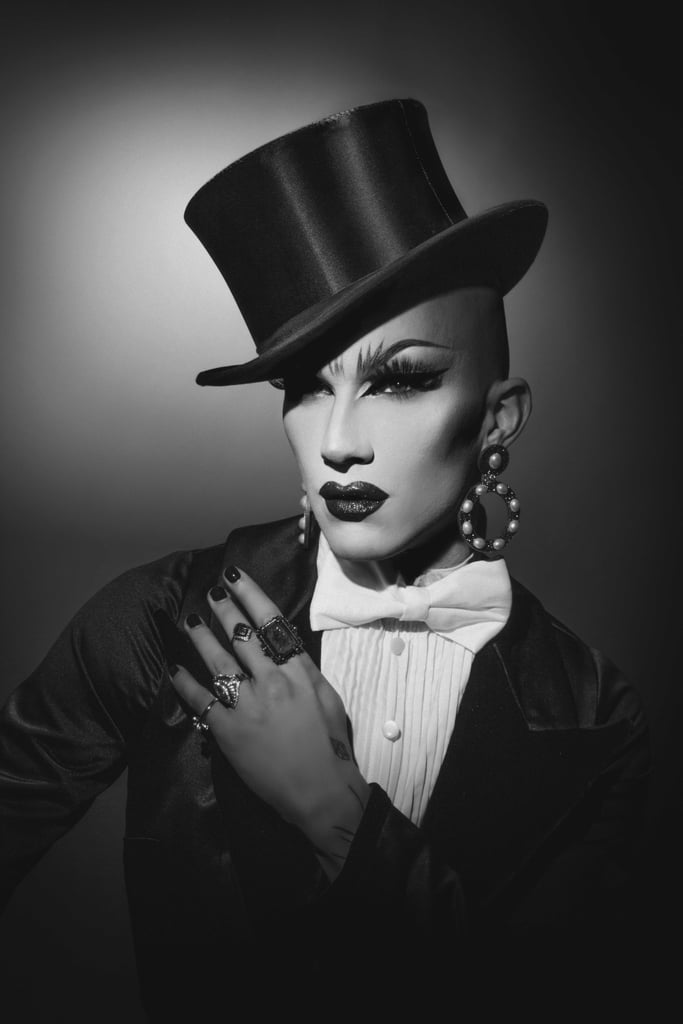
I've caught Velour at a particularly interesting moment in time. Just three days before, we'd both been present for the finale taping of RPDR season 10. And though the season is effectively wrapped, we don't know the winner; each season Ru films alternate endings to keep the audience, the internet, and the world at large in the dark. Velour, in this moment, is like Schrödinger's Cat . . . if Schrödinger's Cat were an impeccable, visionary drag queen, and also if Schrödinger's Cat were not in a box. What I mean is, she's simultaneously the reigning queen and not the reigning queen. She's surrendered her crown, but she doesn't know to whom. The drama of it all, right?
Velour doesn't seem fazed by the end of her reign, nor should she be. Her journey and career as a drag queen seems, currently, to be predicated on shining a spotlight on all the brilliant drag you haven't seen on RPDR. We're in an age where drag is more mainstream than ever, and with such a vast and growing audience, Velour aims to expand our understanding of the art form. RPDR is fantastic, but there is much more to see.
In order to understand Velour's current position in the drag universe — I'm inclined to call it the dragmosphere — I thought it pertinent to follow her journey in. Ground zero for this queen is hard to pinpoint. That's because she really has been doing drag, in some form or another, all her life. "There are pictures of me as a 2-year-old with a towel wrapped around my waist and a towel wrapped around my head," she tells me with a laugh. "At one point, I even put Vaseline on my face and baby powder all over, because I was that desperate to get some kind of beat on." When pressed, she does concede to the moment she really locked in to drag with a more focused intention.
There's the moment you become interested in drag, the moment you start dabbling in drag, and the moment you start showing your drag to the world. Velour admits to me that she kept her drag a secret for a long time. Her early days adhered to a personal art philosophy: just go naked into a dark room, and eventually, people will get curious and start knocking on the door. "My passion for putting on dresses and transforming into this femme goddess was very much something to be embarrassed of," Velour says, commenting on the standard reactions one might get in the beginning stages of drag exploration.
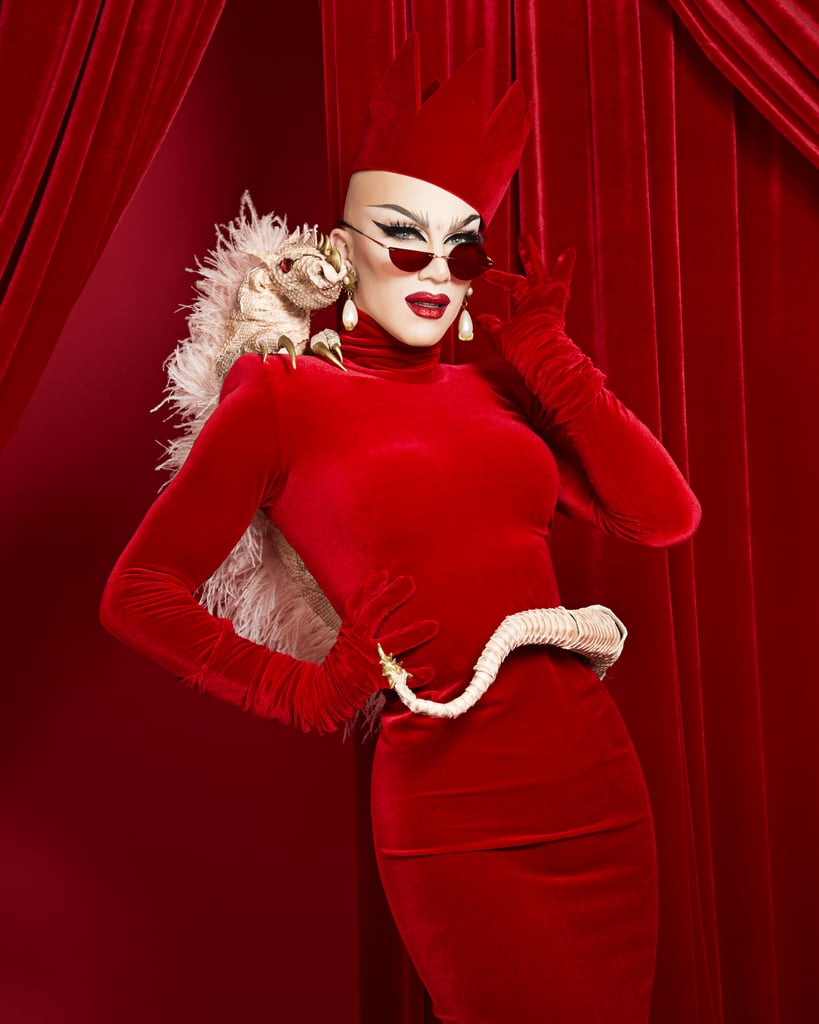
"Even though my parents are very liberal, they told me that I would not be able to dress like that on the streets. They were very clear. They were trying to protect me, but it's easy to internalize this idea of, 'This is how you have to be to find success within society.'"
But Velour found power in bending and eventually breaking these perceived rules. "It's been very freeing and empowering to discover that that's not the case at all. You can find even greater success opening up the rules for investigation and having a little bit of space for innovation, especially innovation in service of like real self-expression and really honoring the truth about yourself."
Velour's first outing as a queen came during that postcollege time, while home with mom and dad in Champaign Urbana, IL. "I went to the gay bar that I had always snuck into as a high student, called C-Street, Chester Street. Which is now, unfortunately, closed. It closed actually a couple months after I won Drag Race, which is kind of sad. I went out on Sunday night, which was the drag night, in this black fishnet and black corset kind of fantasy. A blond wig. And it was an amateur drag competition, and I performed 'Primadonna Girl' by Marina and The Diamonds." She won second place.
After that, Velour went on to grad school, to study cartooning in Vermont. "Basically, I have a master's degree in making scenes, which has proved very useful," she says. There wasn’t a drag bar in this small New England area, but it was the site of what Velour considers her first "gig" as it were. "I created a drag show in a curiosity museum full of weird, freakish taxidermy things. I was like, 'This is a good place for a drag show.' So, my boyfriend Johnny and I produced a show and put a lot of the local artists up in drag for this event."
"You can find even greater success opening up the rules for investigation . . . and really honoring the truth about yourself."
Velour's first booking is another story. "Madame Vivien V booked me in Brooklyn," she says. The number was to be performed at a bar called Bizarre in Bushwick. "It's the closest gay bar to my house. It's like a mixed gay-straight space," Velour says.
That first night, she performed a number that would live on in delicious infamy; the performance is perhaps the perfect encapsulation of the weirdness, care, and artistry Velour puts into her drag. She calls it her "Gollum number" — set to "Wuthering Heights" by Kate Bush and featuring audio from Gollum and Smeagol in the Lord of the Rings trilogy. "It starts as a housewife and ends as Gollum and, really, like, a beautiful glow up," she tells me. "It's my oldest number that I will still perform."
(For the record, there's a version of the performance on YouTube, in which Velour starts with the 2000 remastered version of Shirley Bassey's "I Love You” before transitioning into the full Gollum/Kate Bush fantasy.)
The cool thing about Bizarre is that it represents an incredible full-circle space for Velour. Sometime after her first booking, the bar offered the opportunity to produce a new drag show. She titled it Nightgowns. "We've always put it really simply and said that the mission of Nightgowns is just a really high-quality drag show with production, with seamless transitions, with amazing numbers, and with a full roster of people who are giving their all because they love drag so much," Velour says. "And then, yeah, the side mission is to make sure that the show is at least as representative of the world of drag as a single drag show can be." To keep it fresh, Sasha challenges herself to come up with a new number for every new Nightgowns show.

In the few short years since its premiere, Nightgowns has grown into an absolute sensation. The monthly show eventually outgrew Bizarre and moved to the National Sawdust theater in Brooklyn. In 2018, Velour has taken the show out of the city and on the road. In May, she managed a London and Los Angeles debut.
I was blessed to be able to witness the show in Los Angeles, and I was blown away by the artistry and range of performers. Here's an example: Vander Von Odd is a gothy "monster queen" who won Dragula aka the evil stepsister competition of RPDR. She stood in an evil-looking Victorian gown with a crown made of mirror shards; blood dripped down her face. On the giant screen in the background, we watched up-close footage of her sewing her mouth shut. She attempted to lip-sync “Somewhere Over the Rainbow,” but her mouth was also clamped shut in real life.
That was just one of many incredible performances. I saw numbers from fellow RuGirl Latrice Royale, Creme Fatale (an AFAB queen), a drag king named Landon Cider, Neon Calypso, Untitled Queen, Olive d'Nightlife, The Boulet Brothers, and Sasha Colby.
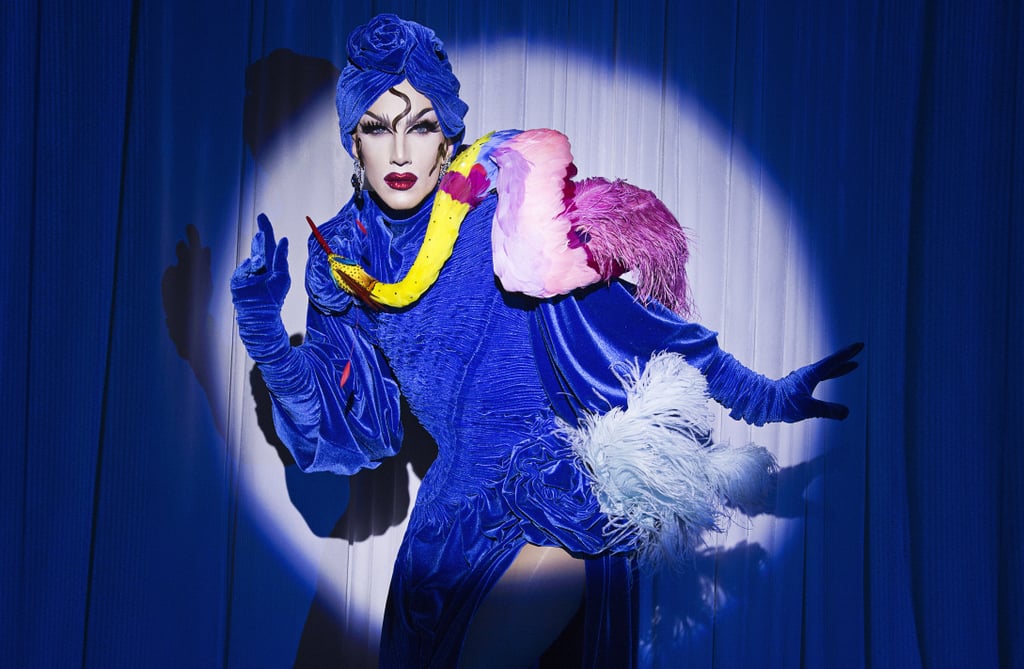
In light of everything, it sounds like her year is packed enough as it is, right? Well, Velour seems inclined to fit in even more. In May, she released the first installment of a new series called One Dollar Drags, which is described as "a six-part anthology of short films that celebrates drag in its many forms." In "Pirate Jenny," the first of six shorts, Velour sings in a drag nightclub while a gang of drag queens marches through the street. The group increases in size until it's an army: Untitled Queen, Olive d'Nightlife, Peppermint (Velour's RPDR runner-up), Chris of Hur, Divina Gransparkle, Merrie Cherry, MiscAllaneous DomTop, Miss Malice, Pierretta Viktori, Rify Royalty, Diego Montoya, and Nancy The Girl. They eventually storm the club and attack all the patrons.
"I'm really just hoping to create some interesting pieces about drag that are not music videos or more interviews," Velour tells me, referring to the typical online content you may see from a drag queen. "There aren't really a lot of models for how to get drag out there into the world outside of live drag shows or recording of them. So it's really just been a fun experiment at that."
All things considered, Velour is pretty high up on her own mountain of drag, and she's traversed the long path on her own terms, in her own sky-high heels. At the end of the day, Velour is a RuGirl who is trying to show the world what it means when you're not a RuGirl. She does this by bucking post-RPDR norms, sure, but a lot of her work involves spotlighting artists from other areas of drag. As her platform grows, so too does her fanbase. And with more fans comes more feedback. In the age of the internet, artists find themselves faced with immediate feedback, and the added anonymity of online intercourse creates space for as much cruelty as it does encouragement.
"It doesn't matter what anyone thinks.
I love this look. I love this performance.
I love myself. That's all that matters."
"I think people forget how much work goes into every active drag. It's so personal," Velour remarks when I ask how she feels about it. "So most drag has so much meaning and passion, and it's sort of very troubling to see people who are passively consuming it being angry or critical of what they're receiving. Because it's not a healthy exchange of passion and creativity. It doesn't seem right for our community."
If you were to gently place one more mission on top of Velour's many other missions, it would be to imbue the drag world with more kindness, both from the queens and consumers. "I'm doing my best to encourage people to be more loving and appreciative when they encounter drag. Less shady, that's not really what shade is meant for."
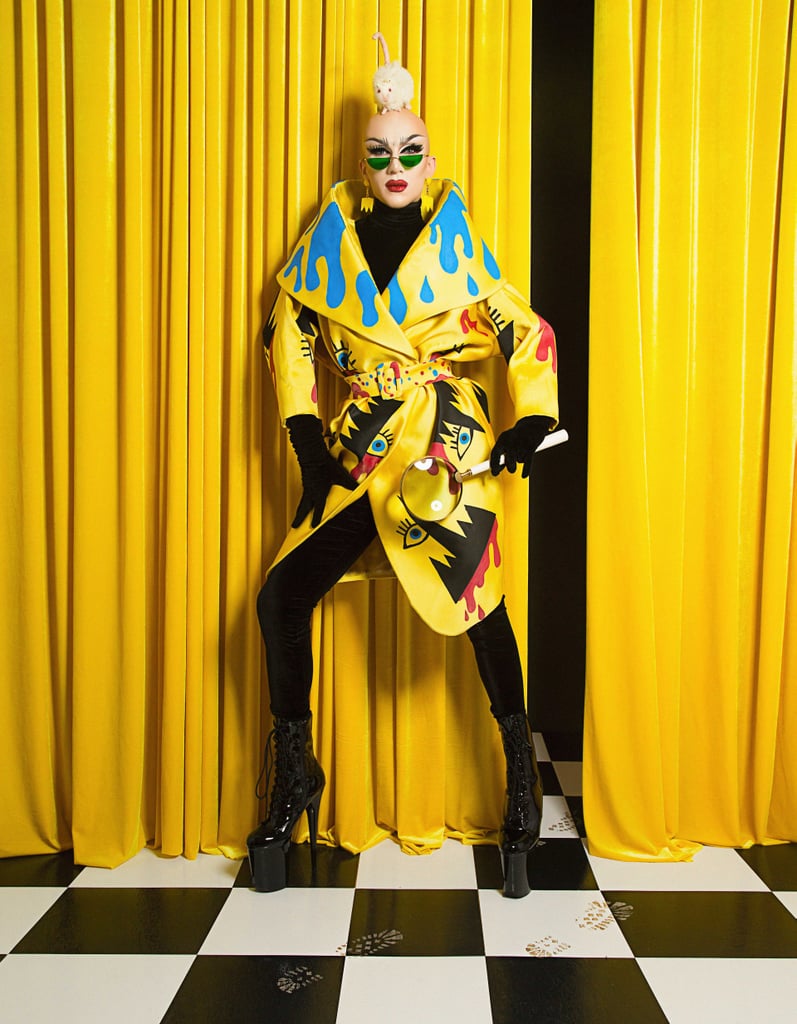
What does she do when she feels like the negativity is getting under her skin? "I deal with it sometimes by getting righteously annoyed sometimes, just by being really strong and confident and saying, 'It doesn't matter what anyone thinks. I love this look. I love this performance. I love myself. That's all that matters.' And then other times, I'm not able to do that, and it really does get to me. And at times, it can be helpful, too. Because sometimes you internalize critique, and it pushes you to go in a different direction that you end up loving. As long as you don't lose sight of why you're doing drag, I don't think any reaction would be wrong."
Naturally, the Sasha Velour we see today is flawless and, it would seem, fully realized. And though you'd be tempted to think she materialized out of the ether in full and glorious perfection, there have been times, along the way, in which she felt defeated or discouraged. "There's a kind of grand Jewish drama that my grandmother always exhibited, where she'd, like, throw herself on the ground a little bit," Velour says, laughing again. "Like, 'I can't possibly go on. This is too much pressure.' But then you do anyways."
She tells me it runs in the family, and she's no exception. "I was that way when I had five people in the audience, and something would go wrong with my papier-maché headpiece. And I can be that way now. But at the end of the day, I feel the drive. The love of drag just keeps me going, no matter how hard it might seem."